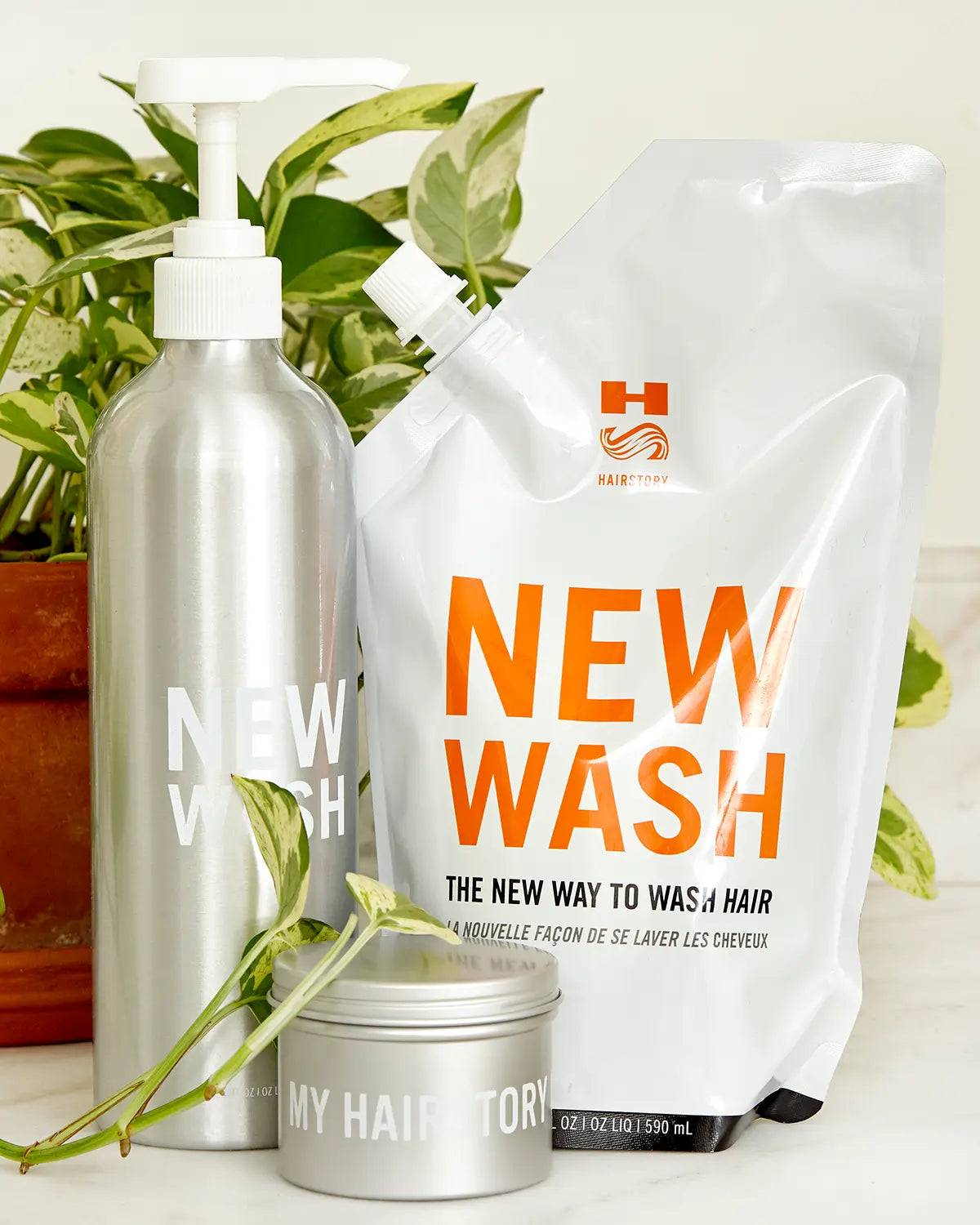Ever wondered what does sustainable packaging mean? Climate-neutral, net-zero, carbon zero, climate positive, carbon-negative – a new vocabulary is required to decipher the claims – and the promises – that companies are making to assuage an increasingly environmentally-aware public.
“We’re so far off from a federal standard for climate claims. There are no rules,” says Isabella Todaro at Climate Neutral, a non-profit working with brands to reduce their environmental impact on the planet. The only regulation that brands are subject to when it comes to making environmental claims are not legally enforced and about a decade old.
Before we dive into sustainable packaging, let’s remember together that the best thing you can do environmentally to promote sustainability is to not create waste in the first place. The next best solution is to invest in products like our environmentally friendly shampoo alternative.
WHAT MAKES PACKAGING SUSTAINABLE?
Eco friendly packaging, compostable packaging, reusable packaging, green packaging. What does all this mean? In an ideal world, a packaging material may be called sustainable if it has been scrutinized from cradle to grave, or from manufacture to disposal in what is called life-cycle analysis. That means that the extraction or the production of sustainable packaging material must involve using minimal energy and water, and result in emitting minimal pollution and greenhouse gasses during its processing to reduce ecological footprint. Bonus points if the material is made of post-consumer waste (PCW) such as recycled paper packaging or plastic bottles. Once a product has been used, its packaging should be recyclable, reusable, or biodegradable, and avoid ending up in landfills or as litter.
IS RECYCLING THE ANSWER?
Yes and no. Recycling is a part of the answer to addressing our waste problem; it depends on what the material is. Plastic is problematic, as most of it can’t be recycled, or is too challenging to do so practically and profitably. If plastic is white, clear, and not in a film form, it is much more likely to be processed by recyclers. If it is, it may only delay its lifespan – ending in landfill – as plastic packaging is only allowed to be recycled once before losing its integrity.
Keep these alarming plastic facts in mind:
- Half of the world’s disposable plastic has been produced in the last 15 years. 91% of it is NOT recycled, nor is it practical to do so.
- An approximated 359 million tons of plastic is produced in the world each year, with 150 million tons of it rotting in landfills or in the environment.
- By weight, there may be more plastic in the ocean than fish by 2050.
However, there are some promising developments in the processing of plastic waste:
- PHA, (polyhydroxyalkanoate) is a bioplastic produced by bacteria that can break down in conventional landfills and takes a few years to disintegrate in ocean water, a small number compared to the 450 years that it takes standard plastic product packaging.
- Researchers have created a new “super-enzyme” that could break down plastic much more quickly than current recycling methods, create the raw material to make new ones, and will make it easier to repurpose it.
Paper is much more recyclable – as long as it is just paper. Paper-based bottles and containers that house liquid products tend to be made with several layers of other materials including plastic or foil and are neither recyclable materials nor biodegradable. Paper-like, fibrous containers like those you get from some fast-casual restaurants are made from bagasse, a byproduct of sugar cane mills, and may be compostable at home, but must be thrown into a dedicated composting bin; if they end up in the recycling bin, material contaminated with its contents gets rejected by recyclers.
The most recyclable materials and environmentally friendly packaging that can be made into durable goods over and over again are aluminum and glass.
CAN BIOPLASTICS SAVE THE DAY?
Bioplastics – made with plant material instead of petroleum – are often touted as an answer because they are biodegradable, and pose no waste issue. But, most bioplastics still require a certain amount of petrochemicals in their production, and when they become waste, they simply break down into smaller parts unless processed in specifically designed digesters.
Corn-, beet-, cassava-, and sugar-based plastics don’t come from petroleum and are compostable – but not in your backyard pile and only in commercial facilities with high heat and controlled moisture. They can also get mixed in with recyclable items and can create contamination within the recycling stream.

THE CLIMATE IMPACT
The Greenhouse Gas Protocol (GGP) is the most commonly used formula for assessing climate impact and carbon footprint. Three metrics measure a corporation’s footprint: Two measure the energy used by a business, and one applies to the entire supply chain, but companies without progress in all 3 areas are still permitted to advertise “neutral” or “net-zero” emissions.
However, the growing demand for transparency led Climate Neutral to propose a more rigorous system to add “Climate Neutral Certified” to product labels. They hope to “build a critical mass of companies who are doing this so that it becomes the cost of doing business.”
To claim the Climate Neutral label, brands must offset greenhouse gas emissions in direct production and throughout their entire supply chains. They must create a strategy to reduce future greenhouse gas emissions to avoid greenwashing or making unsubstantiated claims that are not based on science, or projections rather than actual gains. Climate Neutral has also specified what qualifies as a legitimate carbon credit, including tree planting, renewable energy, water filtration, agriculture, and anti-deforestation projects. Certification involves independent verifiers like Verified Carbon Standard, Climate Action Reserve, Gold Standard, and Clean Development Mechanism.
Brands are under immense pressure to get greener and use more sustainable beauty packaging materials, but it will take time to get on the same page when it comes to labeling and certification. The clock is running out for brands that say they care without putting words into action.
Ever wondered, “What is clean beauty?” or “What is Greenwashing?”. Check out our blog to learn more about these topics and how you can begin your journey to living a more sustainable lifestyle.
Sources:
“Climate Neutral Certified.” Climate Neutral, URL
“Campaign for Safe Cosmetics-Working for Safer Cosmetics.” Safe Cosmetics, URL
Kwai, Isabella. “'Super-Enzyme' Speeds Up Breakdown of Plastic, Researchers Say.” The New York Times, The New York Times, 29 Sept. 2020, URL
“Why 'Biodegradable' Isn't What You Think.” The New York Times, The New York Times, 1 Oct. 2020, URL
Kazior, John. “Achieving Carbon Neutrality Takes More Than a Great Label and Good Intentions.” Eye on Design, 10 Feb. 2021, URL



